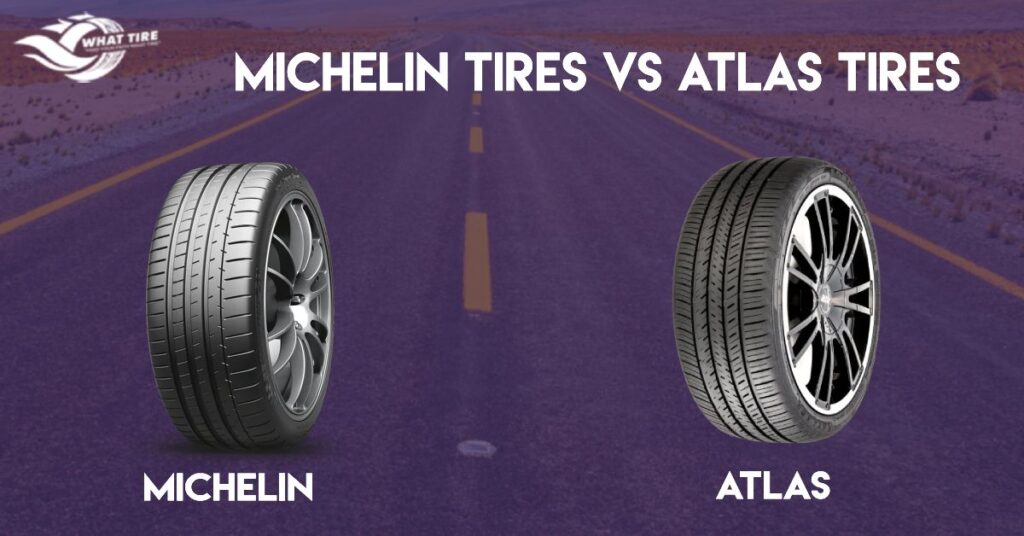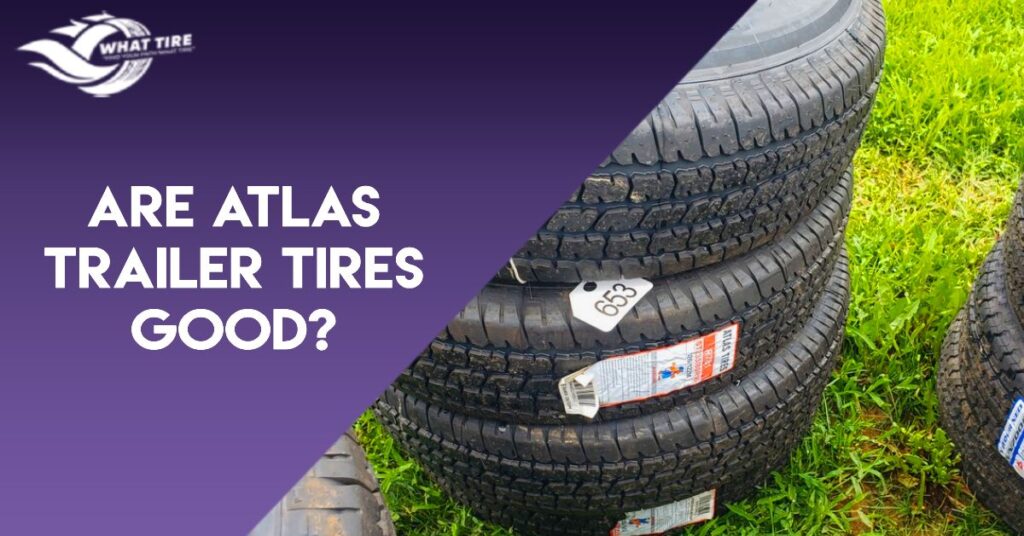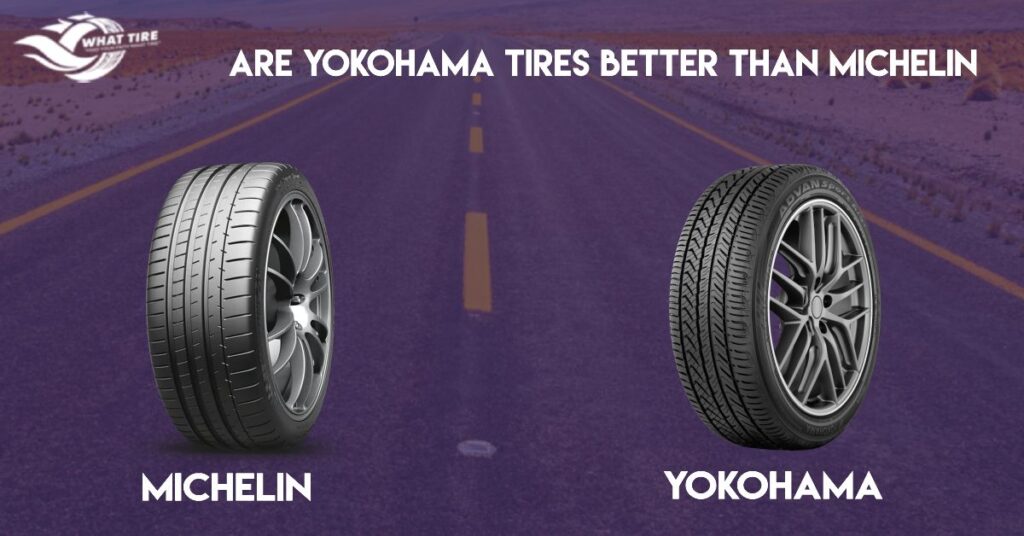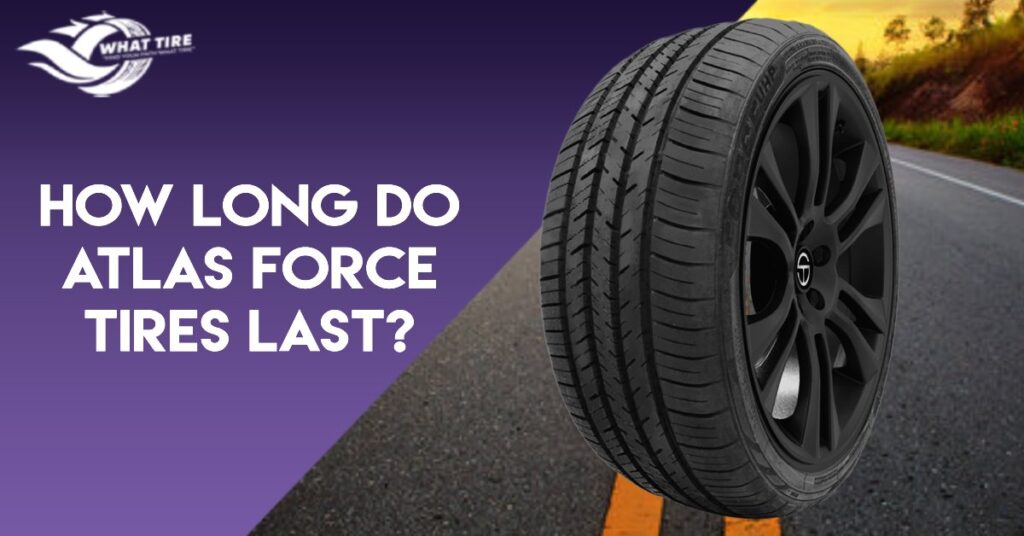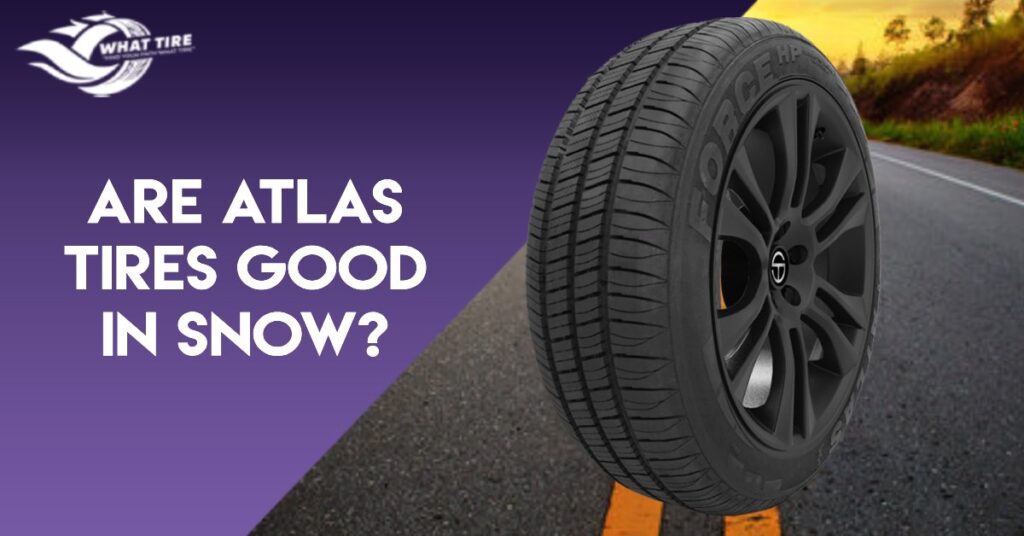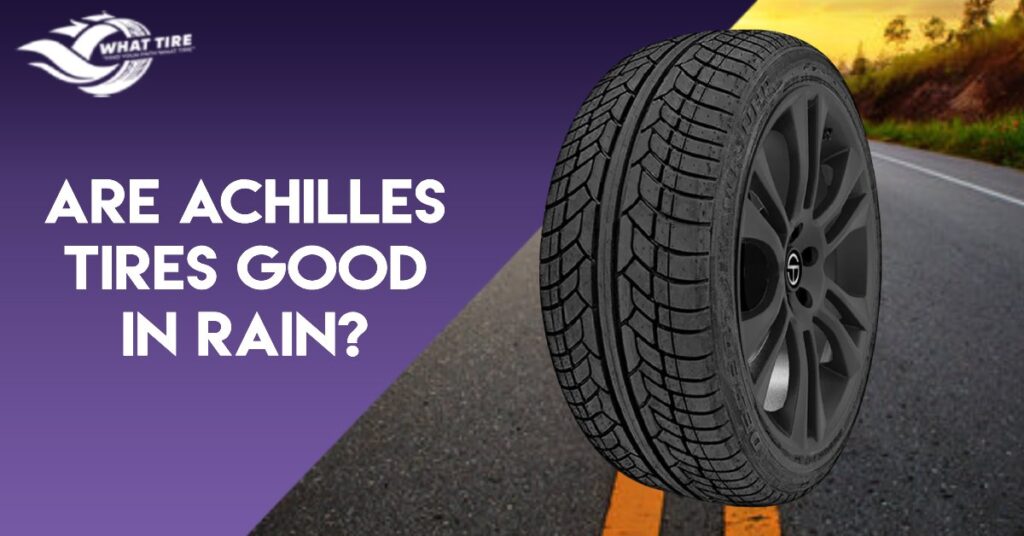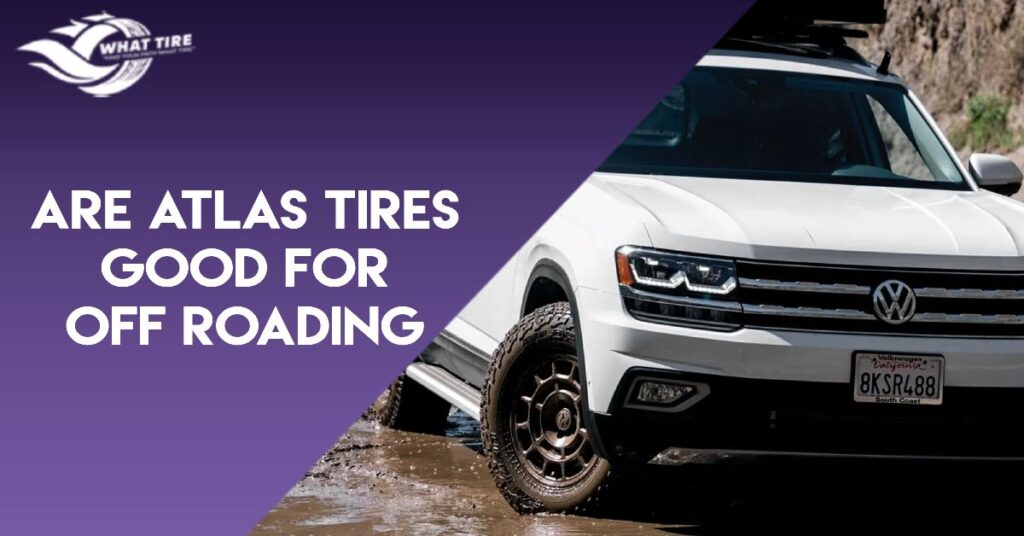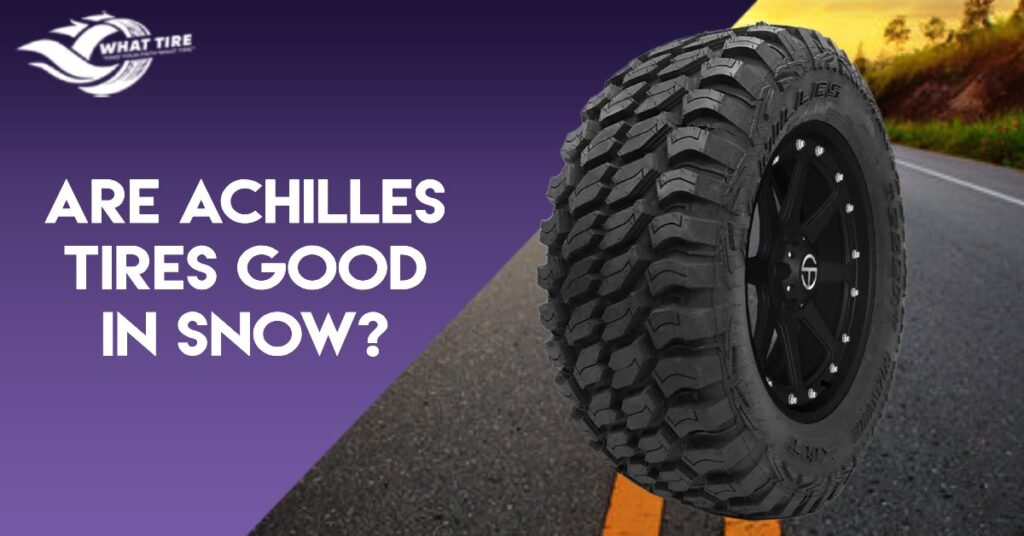Michelin Tires Vs Atlas Tires
Making the right tire choice can significantly impact your driving experience and safety. As experts who have extensively tested both Michelin and Atlas tires, we understand the importance of an impartial comparison on Michelin tires vs Atlas tires! With our hands-on experience, we bring you a to-the-point assessment, devoid of biases or marketing fluff. From traction to durability, fuel efficiency to winter performance, we’ll dissect these tires, providing you with insights to make an informed decision. Join us as we evaluate the strengths and weaknesses of each tire, empowering you to confidently select the ideal companion for your journeys. Michelin vs Atlas – Which Tires Are Better? Michelin tires generally outperform Atlas tires in terms of traction, durability, fuel efficiency, handling, noise and comfort, braking performance, winter performance, but they come at a higher price point. Atlas tires, on the other hand, may offer a more budget-friendly option but may not match Michelin’s level of performance and longevity. Ultimately, the choice between the two brands would depend on the specific needs and preferences of the consumer, balancing factors like performance, budget, and priorities. Michelin Tires Vs Atlas Tires – Detailed Comparison 1. Traction and Grip Comparison When evaluating the traction and grip performance of Michelin and Atlas tires, it becomes apparent that Michelin tires hold a distinct advantage. Michelin tires are engineered with advanced tread patterns and high-quality rubber compounds, resulting in superior grip on various road surfaces. Their innovative designs enhance traction during acceleration, cornering, and braking maneuvers. Additionally, Michelin’s extensive research and development ensure optimal performance in both wet and dry conditions. On the other hand, while Atlas tires offer decent traction, they may not match the level of grip provided by Michelin counterparts, especially in challenging road conditions or aggressive driving scenarios. Thus, for drivers seeking better traction and confidence on the road, Michelin tires prove to be the superior choice in this aspect. 2. Durability and Longevity When scrutinizing the durability and longevity of Michelin versus Atlas tires, Michelin emerges as the clear frontrunner. Michelin tires are renowned for their robust construction and utilization of high-quality materials, providing prolonged tread life and resistance to wear and tear. Their innovative tread compounds and designs added to their tread depth are meticulously crafted to withstand the rigors of daily driving, resulting in extended mileage without compromising performance. Conversely, while Atlas tires may offer satisfactory durability, they might not match the longevity and resilience exhibited by Michelin tires. Therefore, for drivers prioritizing longevity and durability, Michelin tires prove to be the superior choice, guaranteeing reliability and longevity on the road. 3. Fuel Efficiency Michelin employs cutting-edge technologies and engineering principles to minimize rolling resistance, thereby reducing the energy required to propel the vehicle forward. This translates into improved fuel economy, allowing drivers to cover more miles per gallon of fuel consumed. Additionally, Michelin’s innovative tread designs optimize contact with the road surface, further improving efficiency. While Atlas tires may offer acceptable fuel efficiency, they might not match the level of optimization achieved by Michelin, potentially leading to slightly higher fuel consumption. Thus, for drivers prioritizing fuel economy, Michelin tires emerge as the superior choice. 4. Handling and Stability When it comes to handling and stability, Michelin tires stand out as the epitome of precision and control. Engineered with advanced tread patterns and construction techniques, Michelin tires offer unparalleled responsiveness and confidence-inspiring stability during cornering, lane changes, and high-speed maneuvers. Their optimized sidewall design and rigid tread blocks ensure minimal flex, translating into precise steering response and consistent handling characteristics. Conversely, while Atlas tires may provide satisfactory handling, they might not match the level of refinement and stability offered by Michelin counterparts. For drivers seeking ultimate control and stability on the road, Michelin tires unquestionably reign supreme in this aspect. 5. Noise and Comfort Michelin employs advanced noise reduction technologies, such as optimized tread patterns and noise-absorbing materials, to minimize road noise inside the cabin. Additionally, their precisely tuned tread designs and construction ensure minimal vibrations, resulting in a smoother and more comfortable ride. In contrast, while Atlas tires may offer acceptable comfort levels, they may produce more road noise and transmit more vibrations to the vehicle occupants. For drivers prioritizing a quiet and comfortable driving environment, Michelin tires undoubtedly provide a superior choice. 6. Braking Performance Michelin has advanced tread compounds and tread designs to maximize grip and traction during braking maneuvers. This results in better responsiveness and shorter stopping distances in both wet and dry conditions. Moreover, Michelin’s innovative tire construction minimizes flex and ensures consistent contact with the road surface, further optimizing braking performance. Conversely, while Atlas tires may provide acceptable braking performance, they might not deliver the same level of responsiveness and stopping power as Michelin counterparts. For drivers prioritizing safety and confidence in emergency braking situations, Michelin tires undoubtedly offer superior performance. 7. Winter Performance Michelin tires demonstrate exceptional capability for traction and handling on snow and ice-covered roads. Michelin employs specialized rubber compounds engineered to remain flexible in cold temperatures, providing strong grip in winter conditions. Additionally, their tread designs feature sipes and grooves designed to bite into snow and expel slush, improving traction and preventing hydroplaning. Conversely, while Atlas tires may provide adequate performance in winter conditions, they might lack the specialized features and engineering found in Michelin tires, resulting in reduced traction and confidence on slippery surfaces. For drivers prioritizing safety and control in winter weather, Michelin tires unquestionably offer superior performance. 8. Price When considering price, Atlas tires present a more budget-friendly option compared to Michelin. Atlas Tires typically offer competitive pricing due to their focus on cost-effective manufacturing processes and materials. This affordability can appeal to budget-conscious consumers seeking a balance between performance and price. Conversely, Michelin tires are positioned in the premium segment, commanding higher prices reflective of their advanced technologies and reputation for quality. While Michelin tires may offer superior performance, the higher price point may deter some buyers. Thus, for consumers prioritizing affordability without compromising on
Michelin Tires Vs Atlas Tires Read More »

